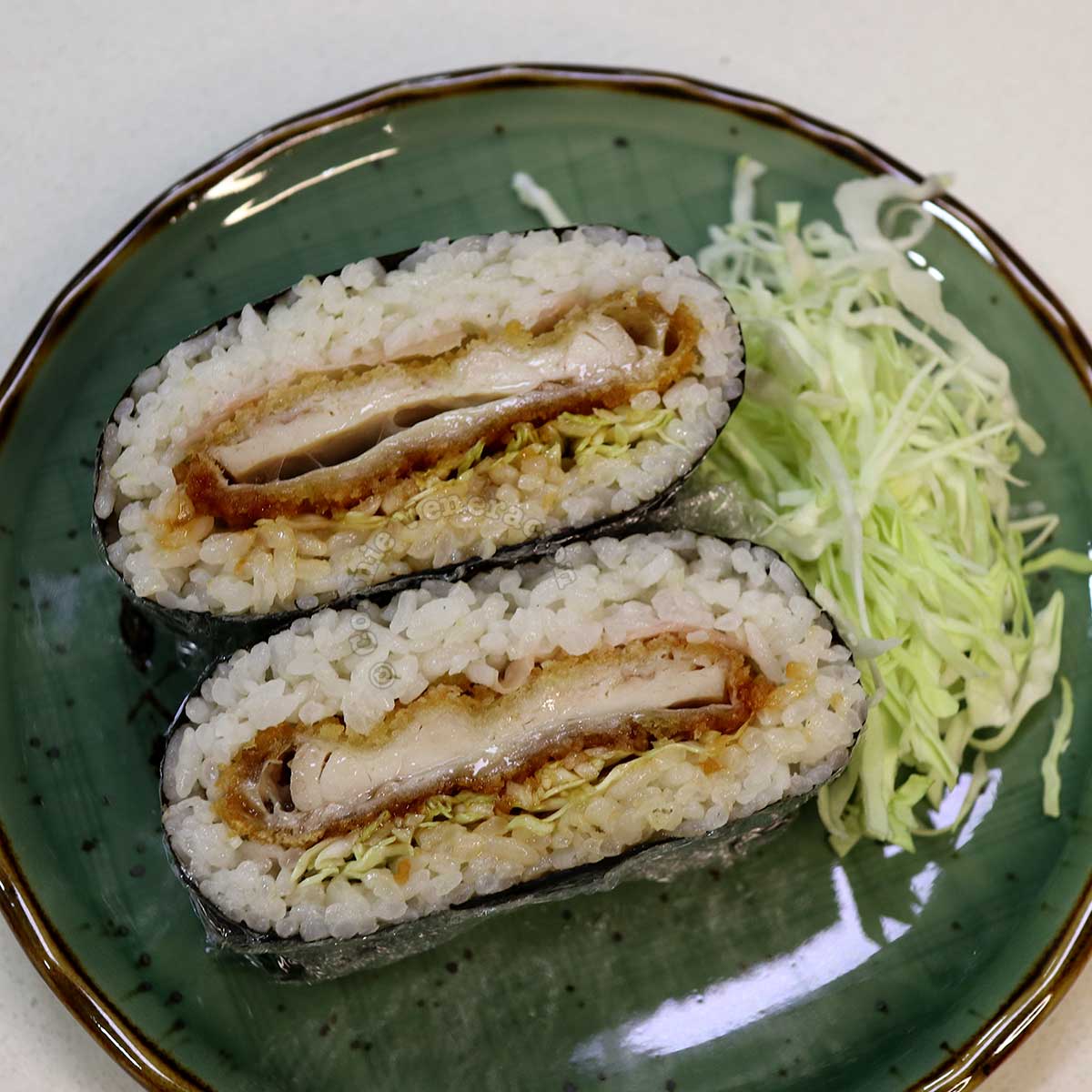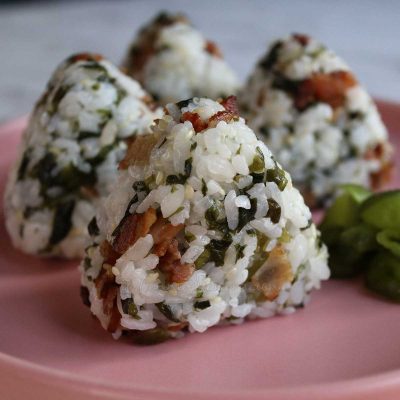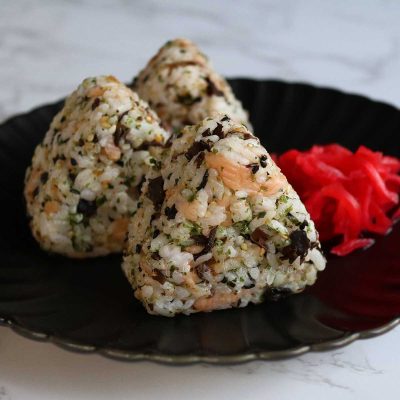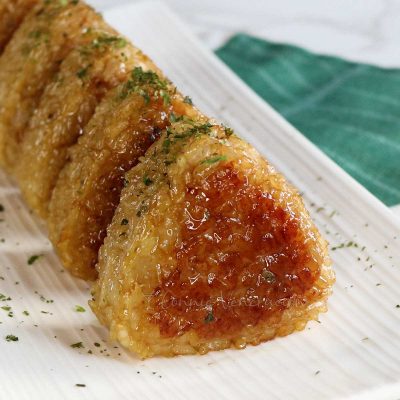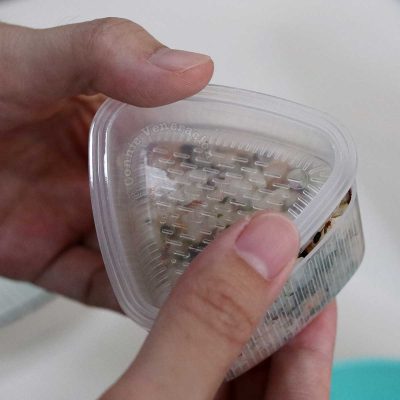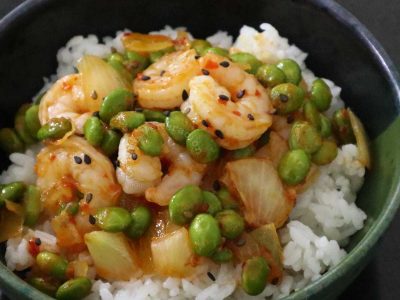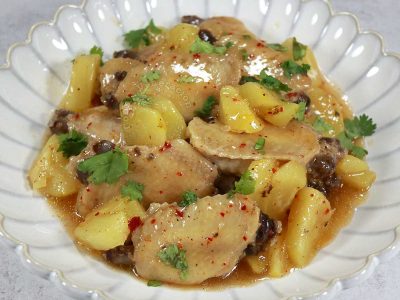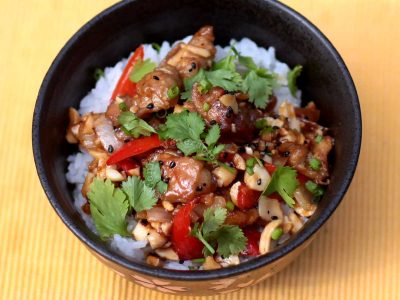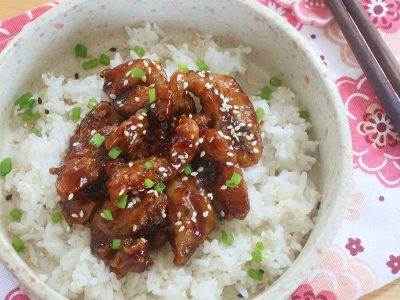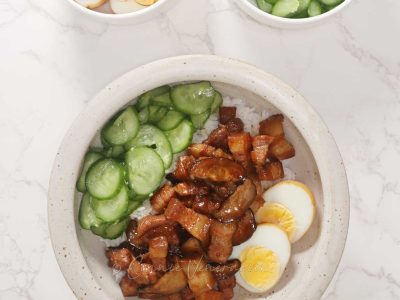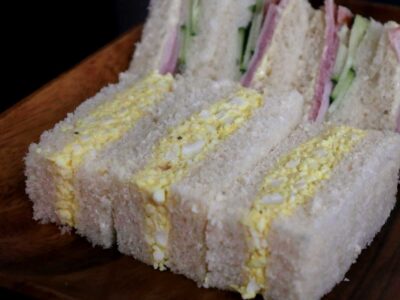What is onigirazu? How is it different from onigiri?
Let’s start with what onigiri is so we can differentiate it from onigirazu. Onigiri is a rice ball shaped either into a triangle or cylinder. It may or may not be wrapped in nori. As examples, let me point you to a few onigiri recipes and tips in the blog.
Onigirazu (also popularly called sushi sandwich, rice sando or sushi burrito outside Japan) literally means “no squeezing” or “no shaping”. So, never mind the onigiri molder. You won’t need it for making onigirazu.
Is onigirazu always wrapped in nori?
Yes. It is a portable meal and there is no way you will be able to hold two layers of rice with filling in between without a wrapper. And you do have to hold onigirazu with your hands when eating it. It is, after all, meant to be eaten like a sandwich rather a meal to be served on a plate or bowl.
Does onigirazu always have filling?
Well, it is a sandwich, albeit with rice instead of bread, and it’s not a sandwich if there is no filling. So, yes, onigirazu always has filling. And the filling can be just about anything. Onigirazu is that versatile.
What is the origin of onigirazu?
While onigiri dates back to the 11th century, onigirazu was born in the 1990s in a manga series called “Cooking Papa”. The main character, Kazumi Araiwa, a salaryman who secretly likes to cook for his family, created onigirazu as an easy-to-prepare school lunch for his son.
Is onigirazu eaten hot or cold?
Either cold or at room temperature, but mostly at room temperature. If the onigirazu is cold (as when prepped ahead then refrigerated for eating later), it can be popped into an oven toaster to bring it to room temperature and to make the nori wrapper a little crisp.
How to make onigirazu
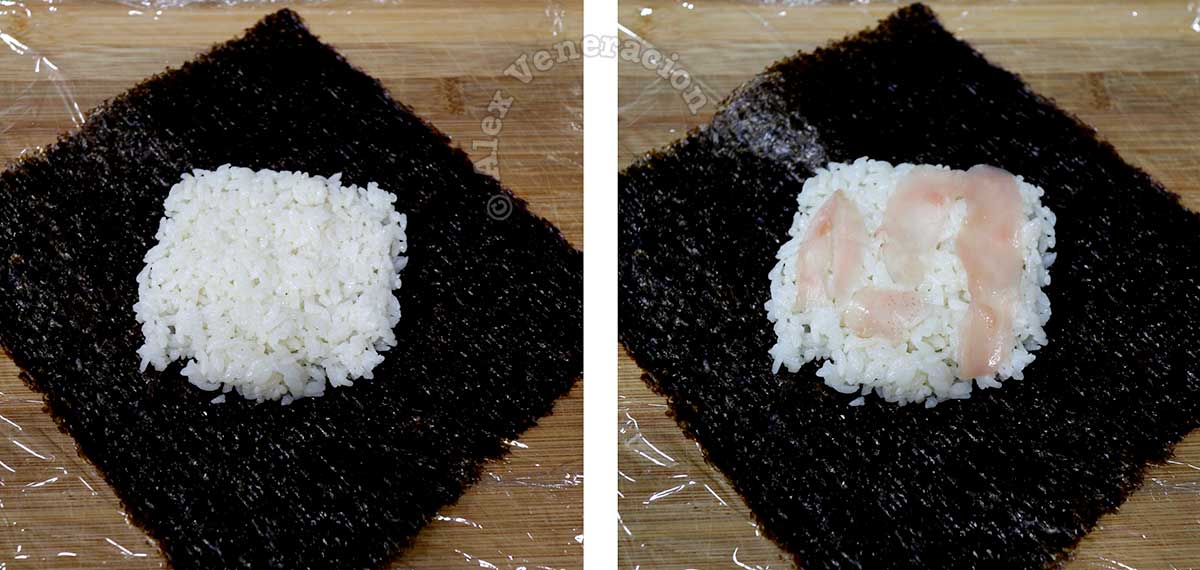
First, you’ll need newly cooked Japanese rice. Season with rice vinegar, toss and cool. It’s quite similar to making sushi rice. When the rice is cool, pile it on a sheet or nori positioned on a sheet of cling wrap. Then, start topping the rice with your fillings. We like gari (Japanese pickled ginger often served with sushi) so we start with that.
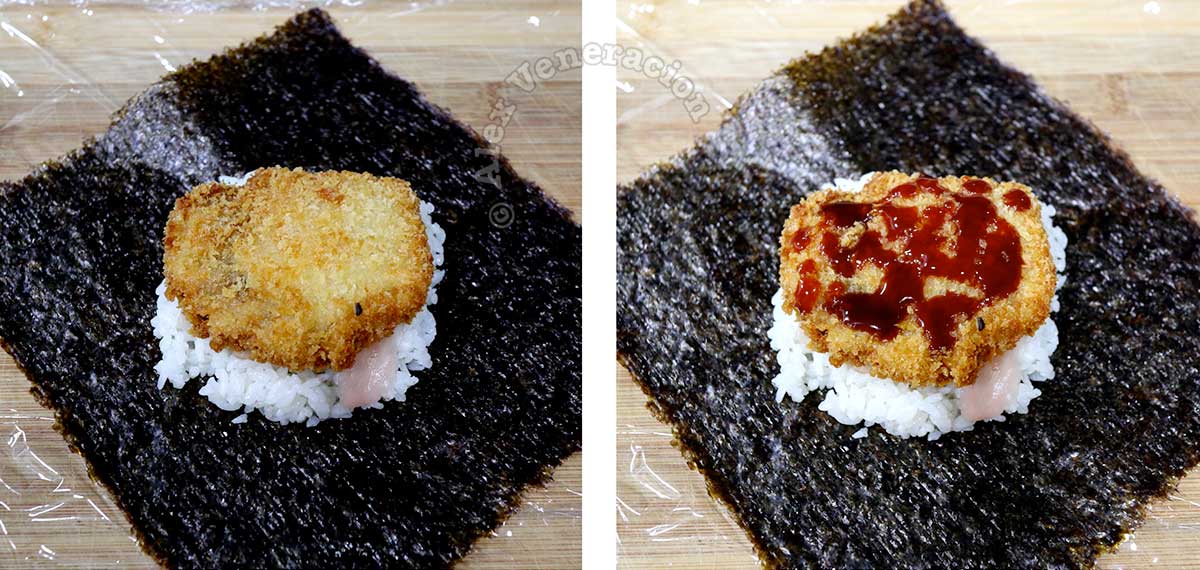
Because this is chicken katsu onigirazu, a whole chicken katsu went on top of the pickled ginger. For flavor and added moisture, tonkatsu sauce was drizzled on top side of the chicken.
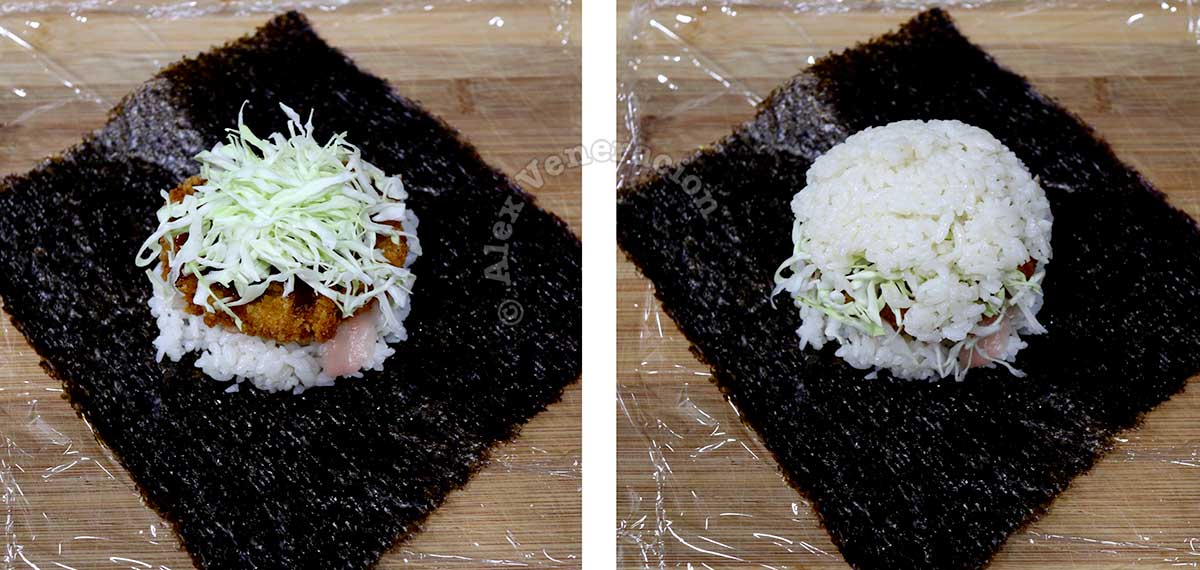
Shredded cabbage, a mainstay in Japanese meals, was piled on top of the sauce-slathered chicken, and the fillings were covered with another layer of seasoned rice.
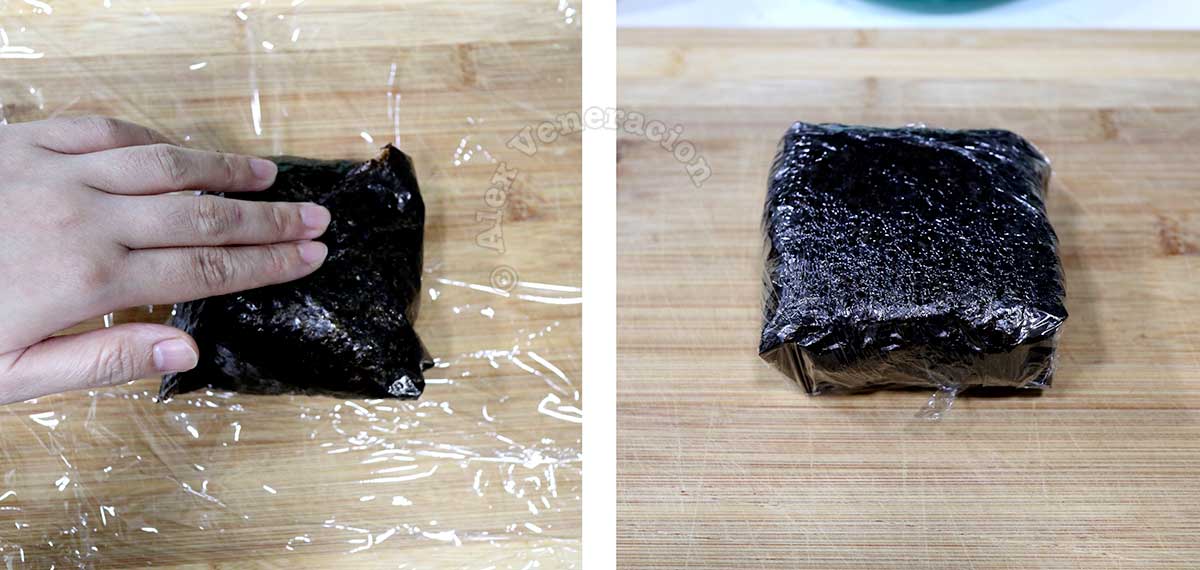
The corners of the nori sheet are gathered to enclose the rice and fillings. Then, the package is wrapped with cling film. If you’re wondering what the point of using cling film is when the onigirazu is already done, well, the cling film makes the next step easier.
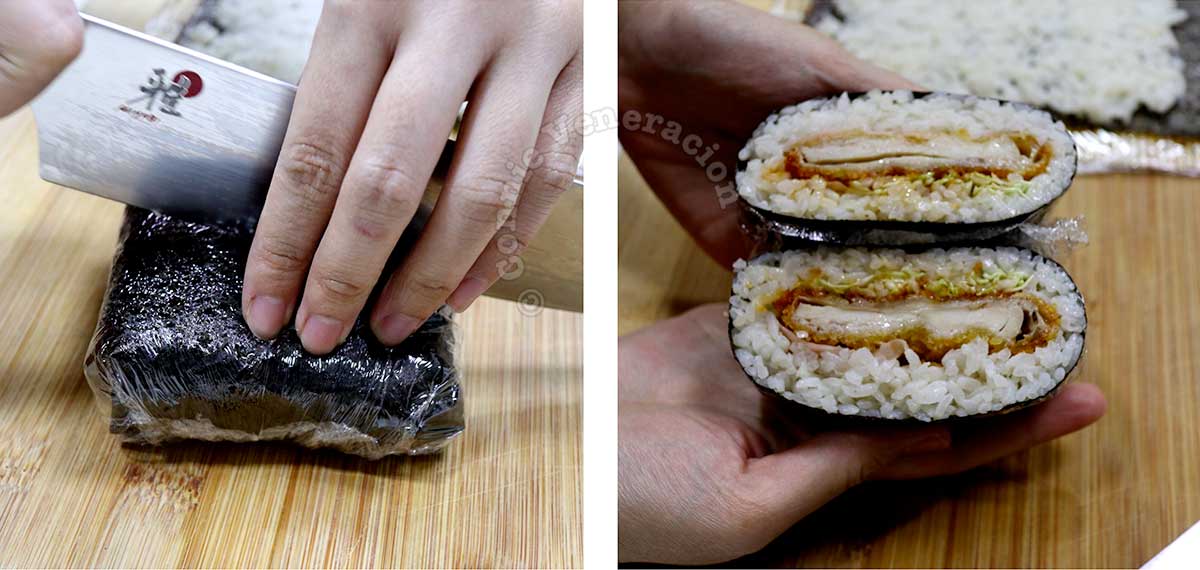
Onigirazu is traditionally served halved. Without the cling film that tightly binds everything together, the onigirazu will likely fall apart when you cut in into halves.
Chicken katsu onigirazu
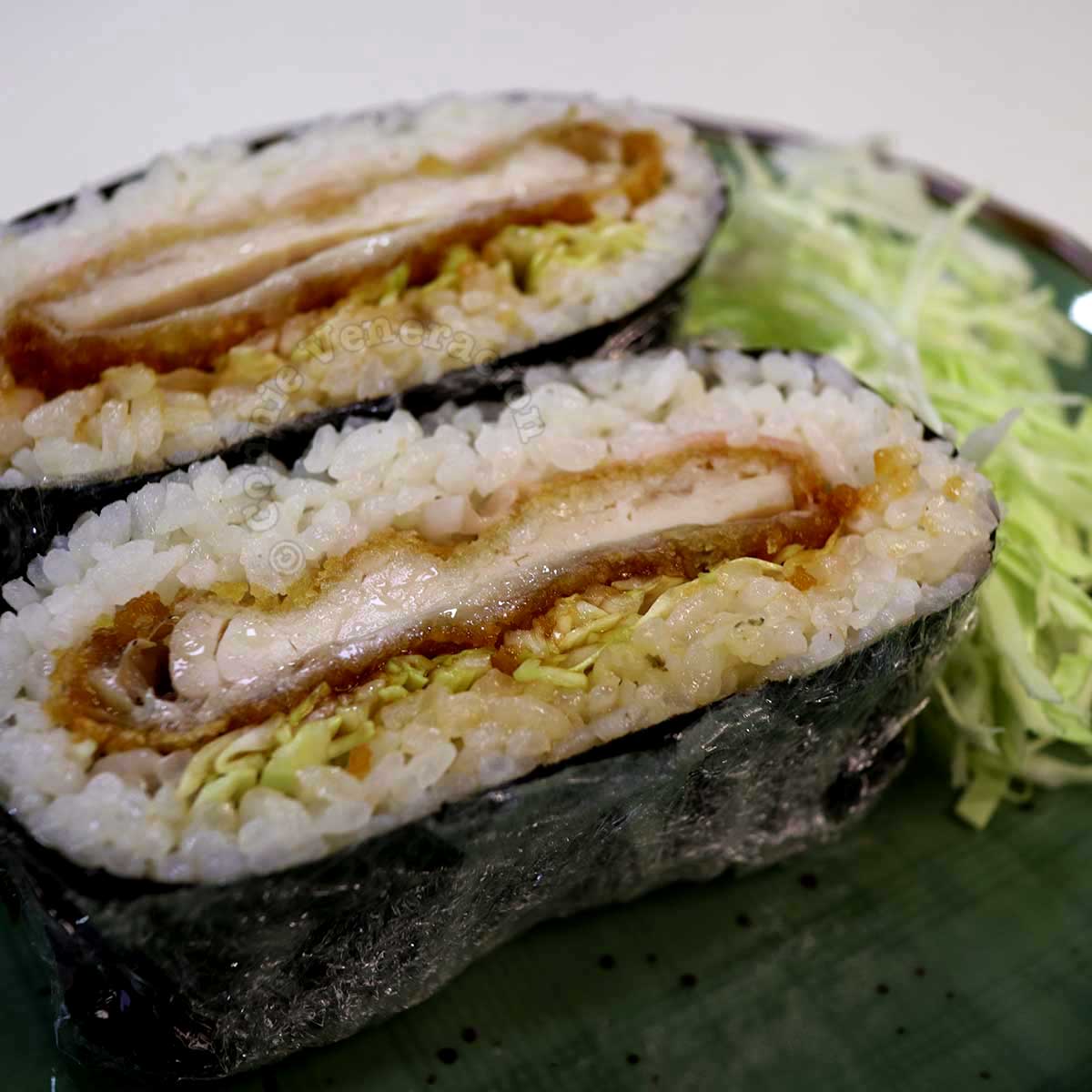
Ingredients
- 4 cups Japanese rice newly cooked
- 1 tablespoon rice vinegar
- 4 roasted nori sheets
- gari (pickled sushi ginger)
- 4 chicken katsu fully cooked
- ½ cup tonkatsu sauce
- 1 cup finely sliced white cabbage divided into four portions
Instructions
- Spread the hot rice on a tray, drizzle in the rice vinegar and toss to distribute evenly.
- Leave the rice to cool, tossing often, until it reaches room temperature.
- Divide the rice into eight equal portions.
- Place a square sheet of cling film (larger than the nori sheet) on your work surface and position a nori sheet at the center.
- Take a portion of rice and arrange in a mound at the center of the nori sheet.
- Arrange strips of pickled ginger on top of the rice.
- Take a chicken katsu and press lightly on the rice.
- Spread tonkatu sauce on top of the chicken katsu.
- Take a portion of shredded cabbage and place on top of the chicken.
- Take another portion of rice and lightly press on the cabbage-topped chicken katsu.
- Gather the four corners of the nori sheet and fold in to enclose the fillings.
- Gather the four corners of the cling film and fold in to enclose the onigirazu.
- Using the remaining ingredients, make three more chicken katsu onigirazu.
- Serve the chicken katsu onigirazu right away or cut into halves to expose the fillings for a more visually appetizing look.

